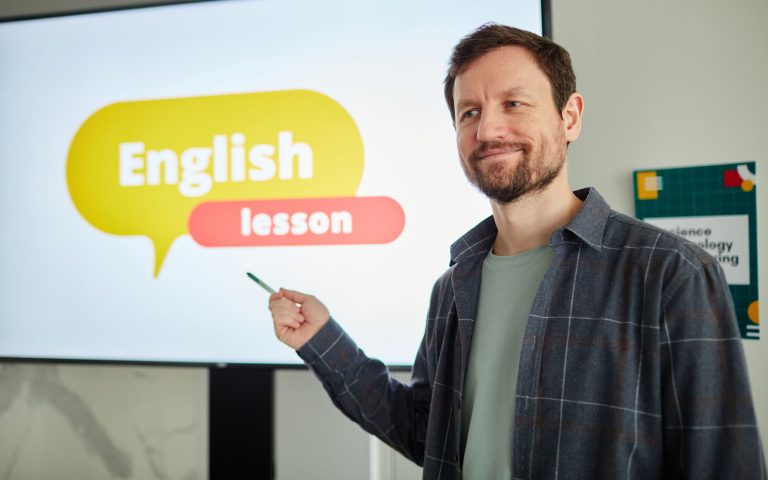There are world-renowned speakers who can orate with confidence, entrance an audience, and speak with the natural ease that makes it seem like they were born to present. Then there are good speakers whose voices can hold your attention and will get a standing ovation. And there are those who crumble at the very thought of having to stand in front of an audience and present. Wherever you find yourself on the presentation spectrum, there are small but effective things you can do to ace your presentation. We’re looking at the art of presentations and giving you tips to set you up for your best presentation.
What is a presentation?
A presentation is defined as a type of communication where a speaker conveys information to an audience. With presentations, you explain a topic, idea, report, system, process, forecast, or similar communications to a group of people. Presentations can be short introductions, speeches, or a lecture to a class, webinars, or now famously, TED Talks.
Not every position requires you to give presentations but being able to give presentations remains a valuable skill to develop.
9 tips for giving a good presentation
The quality of your presentation is largely impacted and related to your level of preparation. Here are eight valuable tips to use when preparing for and giving a presentation:
- Start strong. A great opening line will capture your audience’s attention. Craft a strong beginning. Add relevant stories, inspirational quotes, concepts, and examples to give life to your presentation. And close off your presentation on a high note that will leave your listeners wanting more.
- Prepare. Plan. Practice. Give yourself ample time to prepare your presentation. A last-minute job will look like it was done haphazardly and leaves a bad impression on your audience. Plan your content. What will you speak about? What structure will your presentation follow? What message are you trying to relay to your audience? If speaking in front of an audience makes you nervous, take time to practice in front of a mirror, with a friend, or with a colleague.
- Have visuals. Not all presentations need visual aids but if you do have them, they must be simple, impactful, and purposeful. Visuals add and complement your oral presentation and should not replace it.
- Don’t rely on technology. We all know that technology sometimes fails us at the most inopportune times. Test the equipment beforehand if possible and have printed backup documents to share with the audience. While having slides and videos are great, know your content well enough that you can continue if the lights don’t come on for whatever reason.
- Know your audience. Whom you are speaking to matters as much as what you will be saying to them. Does your audience have any background on the topic you’re presenting? Too much information will be boring and frustrating. Not enough detail will leave them feeling lost.
- Use your body. A big part of any presentation is the verbal content and the visual aids that accompany it. Another big, yet often ignored part is your non-verbal communication. This relates to your body language, facial expressions, and eye contact.
- Body language. If possible, move around the floor you are speaking from and don’t remain in one place. Make minimal movements that won’t distract your audience. This shows your engagement in your presentation and opens the space up for your audience to be more involved. Try not to have your arms stiff at your sides or speak with your arms folded. These give off a closed-off impression and will disengage your audience.
Stand tall and with your shoulders back to exude confidence (even if you don’t always feel it).
- Facial expressions. Make use of hand gestures and facial expressions in key moments in your presentation you want to emphasize. This shows excitement and interest in the topic being spoken about.
- Eye contact. Look at the people you are speaking to. Connect with them through eye contact and make everyone feel seen and included.
- Make use of the 10-20-30 rule. This concept was first shared by Guy Kawasaki of the global corporation, Apple. Here, he suggests your presentation:
- Has a maximum of 10 slides.
- Doesn’t exceed 20 minutes.
- Use a minimum point size 30 for the font.
PowerPoint presentations are visual aids and should not have more information than what you present orally.
- Ask questions. Ask your audience questions as you go through the presentation and leave time for questions at the end of the presentation. This keeps them engaged in the content.
- Use your voice. Vary your speed, tone, and pitch throughout your presentation. Give verbal cues: emphasize parts you want them to pay attention to by using phrases like, “this next part is what I want to highlight…”. Speak clearly, concisely, and confidently.
The best presentations are those that have something fresh, new, and exciting that hasn’t been seen before. The worst are those that seem robotic, without feeling, or are monotone. When it’s time for you to stand in front of the audience, stand up and speak like you deserve to be there. Own the space. Remain confident in your abilities. Play to your strengths and give a presentation that is authentic to who you are and will leave a lasting impression on those who heard you.








